
views
X
Research source
Greeting and Exchanging Names
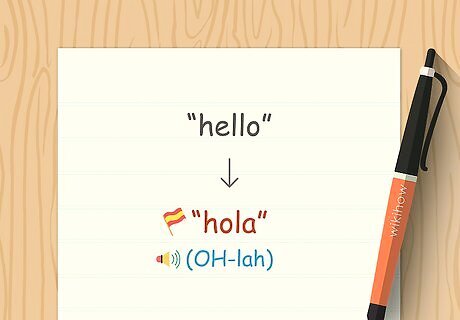
Start with a warm hello. The most basic and universal way to say "hello" in Spanish is hola (OH-lah). You also might use "buenos días" (boo-AY-nohs DEE-ahs) if you're speaking to the person during the day. In the afternoon, you can use "buenas tardes" (boo-AY-nahs TAHR-days) if you want to greet the person based on the time of day. After the sun goes down, switch to "buenas noches" (boo-AY-nahs NOH-chays).
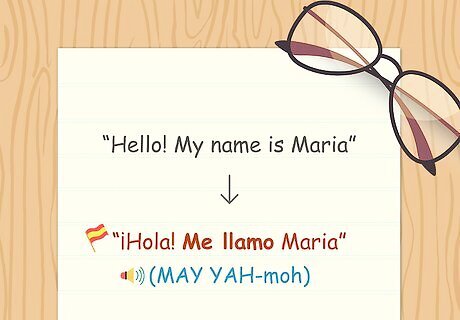
Say your name. The easiest way to introduce yourself is to simply say "me llamo" (MAY YAH-moh) after your "hello." This phrase literally means "I'm called," but translates to "my name is." For example, you might say "¡Hola! Me llamo Maria" ("Hello! My name is Maria"). You can also say "mi nombre es," which literally means "my name is." If you want a briefer, more casual introduction, you can use the word "soy," which means "I am." For example, you might say "hola, soy Maria" ("Hello, I'm Maria").
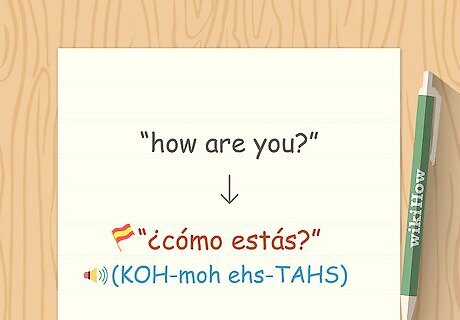
Include a friendly greeting. After you've said "hello," ask the person how they're doing or how their day has been. The most common way to say "how are you?" in Spanish is "¿cómo estás?" (KOH-moh ehs-TAHS). For example: "¡Hola! Me llamo Maria. ¿Cómo estás?" When you add this question, you've politely introduced yourself to the person and started a conversation.
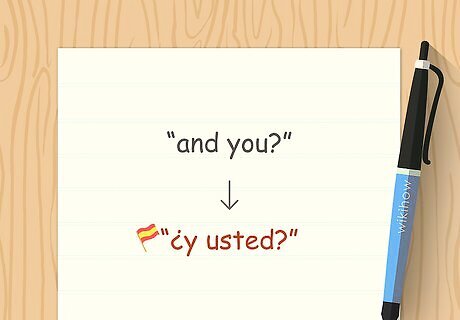
Ask the other person their name. If you want to ask the person their name, you would say "¿Cómo se llama?" (COH-moh SAY YAH-mah). You can also use "¿y tú?" or "¿y usted?" For example, you say "¡Hola! Me llamo Maria. ¿Y usted?" The person responds "Hola, Maria. Me llamo José. ¿Cómo estás?"
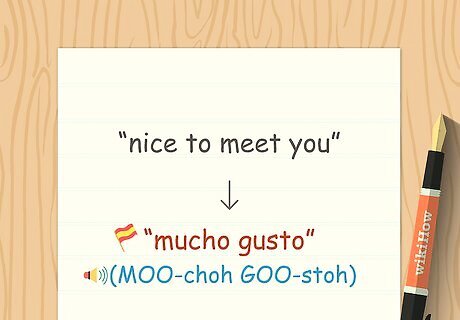
Tell the person you're pleased to meet them. After the person tells you their name, use "¡Encantado!" (ehn-kahn-TAH-doh) or "¡Encantada!" (ehn-kahn-TAH-dah). The ending changes depending on your gender. This is a basic, casual way to say you are pleased to meet someone. You can also say "mucho gusto" (MOO-choh GOO-stoh) to mean "nice to meet you." This phrase works especially well if the other person has introduced themselves first. For example, suppose someone said to you "¡Hola! Me llamo José. ¿Y tú?" You could respond "Mucho gusto, me llamo Maria." A more formal way to say "pleased to meet you" is "estoy encantada de conocerla." Use conocerle if you're talking to a guy.
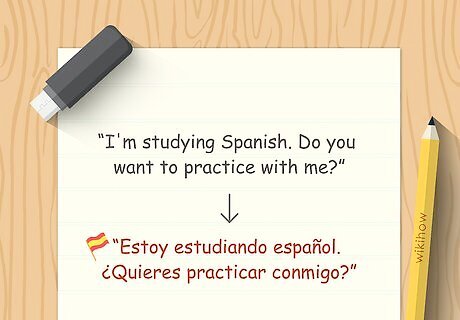
Let the person know you're just learning Spanish. You may feel more comfortable conversing with native Spanish speakers if you tell them up front that you've just started learning to speak the language. For example, you might say "Estoy estudiando español. ¿Quieres practicar conmigo?" (I'm studying Spanish. Do you want to practice with me?") If the person agrees to continue conversing with you, be sure to say "gracias" ("thank you").
Making Small Talk
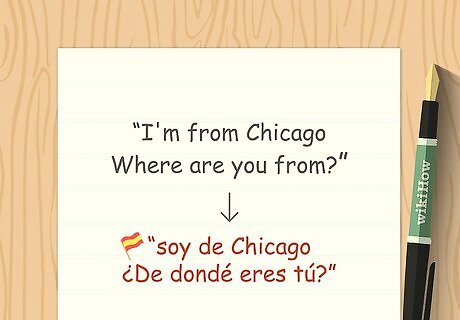
Tell the person where you're from. Once you've progressed beyond the basic introduction, continue the conversation by telling them a little about yourself. Especially if you're traveling, talking about where you're from is a good next step. Use the phrase "soy de" to introduce the place where you're from. If you currently live somewhere other than your hometown, you might also use "vivo en" ("live in"). For example, you might say "soy de Chicago" ("I'm from Chicago"). You could also say "soy de Chicago, pero vivo en Santiago" ("I'm from Chicago, but I live in Santiago"). To ask the person where they're from, say "¿de dondé eres tú?"
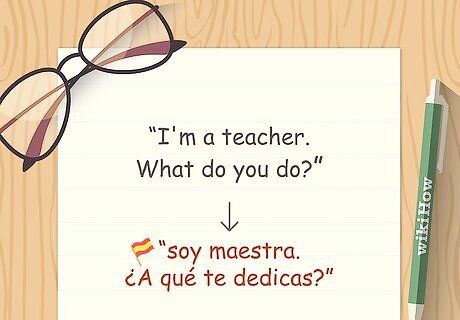
Explain what you do for a living. "What do you do?" is one of the first questions people ask when they're meeting someone new, and this is no different in Spanish. You can use "soy" with your general job title to say what you do, or you can use "trabajo con" to talk about a more general field. For example, you might say "soy maestra" ("I'm a teacher) or "trabajo con animales" ("I work with animals"). To ask someone what they do for a living, say "¿A qué te dedicas?" ("What do you do?")
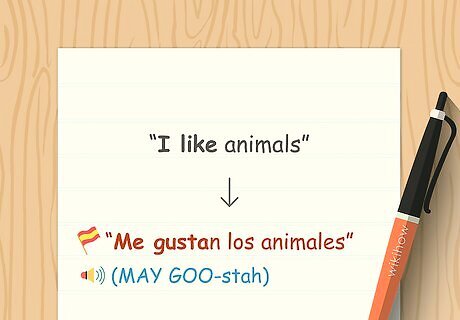
Mention some things you enjoy. To talk about things you like, you only need to add the words "me gusta" (MAY GOO-stah) before the Spanish word for the thing that you like. This lets the person you're talking to know a little more about you and your interests. Any one of these things might strike up a conversation. For example, you might say "Me gustan los animales" ("I like animals"). The other person could reply "¡A mi tambien! ¿Tienes mascota?" ("Me too! Do you have a pet?"). You could then say "Sí, un perro y un gato." ("Yes, a dog and a cat.")
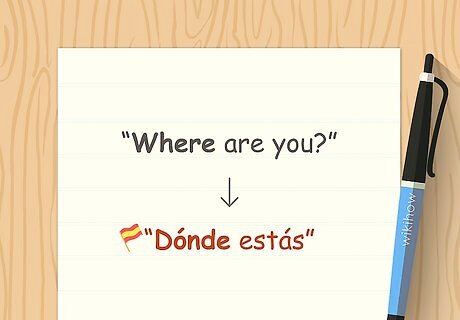
Learn basic question words, such as cómo (KOH-moh) and cuál (KWAHL). Knowing basic question words allows you to engage the other person in the conversation. After you say something about yourself, you can ask them for the same information about themselves. You already know cómo from "cómo estas" ("how are you"). Cuál means "which," while qué means "what." Just as you might say "what?" in English if you didn't hear or understand what someone said, you can say "¿que?" in Spanish. Other question words include dónde (where) and cuándo (when). Generally, questions in Spanish are formed the same way they are in English. Simply reverse the order of the subject and verb in your sentence, so that the verb comes before the subject.
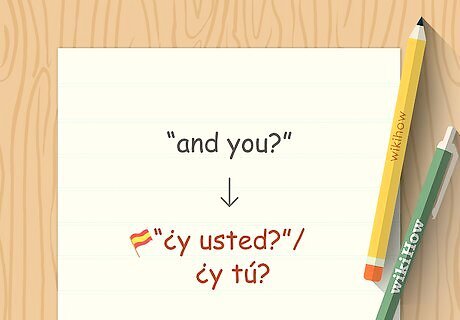
Add "¿y tú?" or "¿y usted?" to keep the conversation going. This phrase means "and you?" in Spanish. You can use it as an easy way to engage the other person in conversation, especially if you don't know a lot of Spanish questions or are concerned about your grammar. Don't use the informal pronoun tú unless the other person has used that pronoun for you first, or if you're talking to a child.

















Comments
0 comment